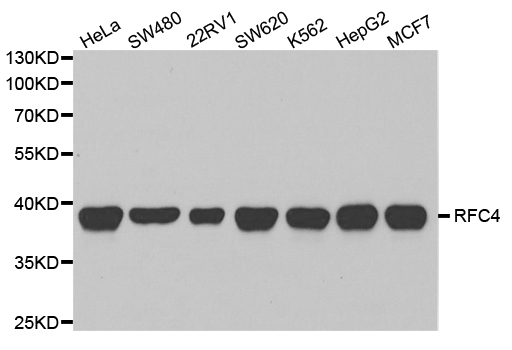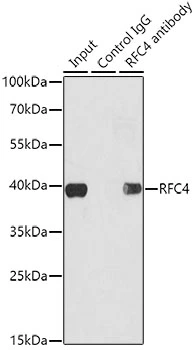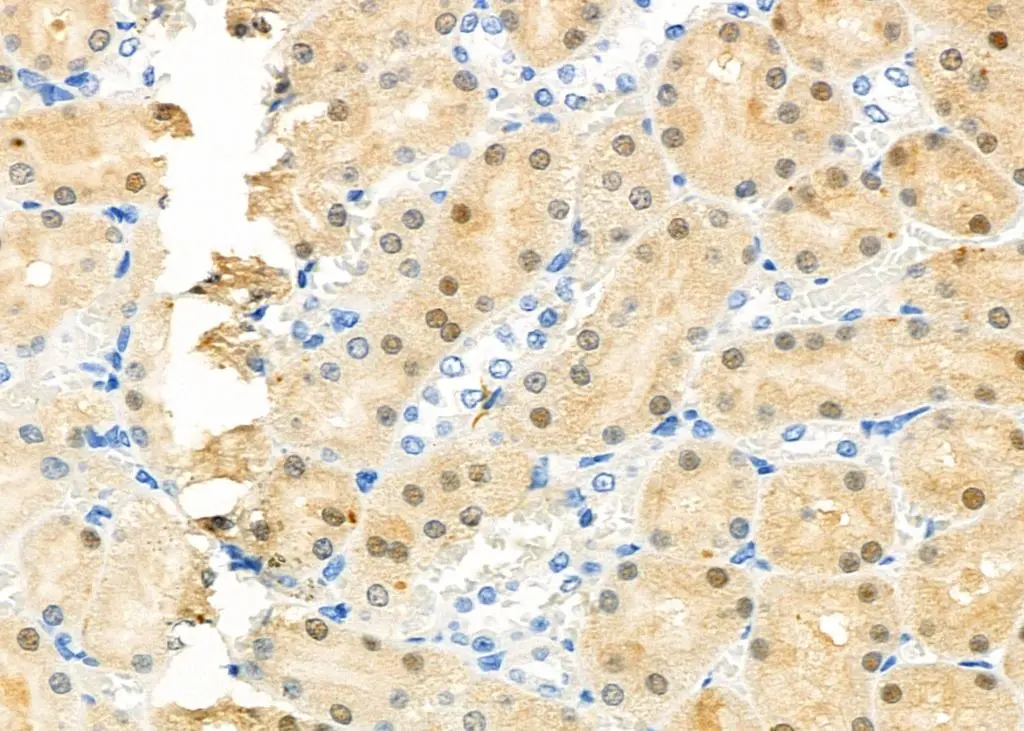p37 antibody [1320]
GTX70285
ApplicationsImmunoFluorescence, Western Blot, ImmunoCytoChemistry
Product group Antibodies
TargetRFC4
Overview
- SupplierGeneTex
- Product Namep37 antibody [1320]
- Delivery Days Customer9
- Application Supplier NoteWB: 1:1000. *Optimal dilutions/concentrations should be determined by the researcher.Not tested in other applications.
- ApplicationsImmunoFluorescence, Western Blot, ImmunoCytoChemistry
- CertificationResearch Use Only
- ClonalityMonoclonal
- Clone ID1320
- Concentration1 mg/ml
- ConjugateUnconjugated
- Gene ID5984
- Target nameRFC4
- Target descriptionreplication factor C subunit 4
- Target synonymsA1, MRMNS, RFC37, replication factor C subunit 4, A1 37 kDa subunit, RF-C 37 kDa subunit, RFC 37 kDa subunit, activator 1 37 kDa subunit, activator 1 subunit 4, replication factor C (activator 1) 4, 37kDa, replication factor C 37 kDa subunit
- HostMouse
- IsotypeIgG1
- Protein IDP35249
- Protein NameReplication factor C subunit 4
- Scientific DescriptionThe elongation of primed DNA templates by DNA polymerase delta and DNA polymerase epsilon requires the accessory proteins proliferating cell nuclear antigen (PCNA) and replication factor C (RFC). RFC, also named activator 1, is a protein complex consisting of five distinct subunits of 140, 40, 38, 37, and 36 kD. This gene encodes the 37 kD subunit. This subunit forms a core complex with the 36 and 40 kDa subunits. The core complex possesses DNA-dependent ATPase activity, which was found to be stimulated by PCNA in an in vitro system. Alternatively spliced transcript variants encoding the same protein have been reported. [provided by RefSeq, Jul 2008]
- Storage Instruction-20°C or -80°C,2°C to 8°C
- UNSPSC12352203
References
- Wei L, Ploss A. Hepatitis B virus cccDNA is formed through distinct repair processes of each strand. Nat Commun. 2021,12(1):1591. doi: 10.1038/s41467-021-21850-9Read this paper
- Wei L, Ploss A. Core components of DNA lagging strand synthesis machinery are essential for hepatitis B virus cccDNA formation. Nat Microbiol. 2020,5(5):715-726. doi: 10.1038/s41564-020-0678-0Read this paper
- Guo Z, Zheng L, Dai H, et al. Human DNA polymerase beta polymorphism, Arg137Gln, impairs its polymerase activity and interaction with PCNA and the cellular base excision repair capacity. Nucleic Acids Res. 2009,37(10):3431-41. doi: 10.1093/nar/gkp201Read this paper
- Levin DS, Vijayakumar S, Liu X, et al. A conserved interaction between the replicative clamp loader and DNA ligase in eukaryotes: implications for Okazaki fragment joining. J Biol Chem. 2004,279(53):55196-201.Read this paper





